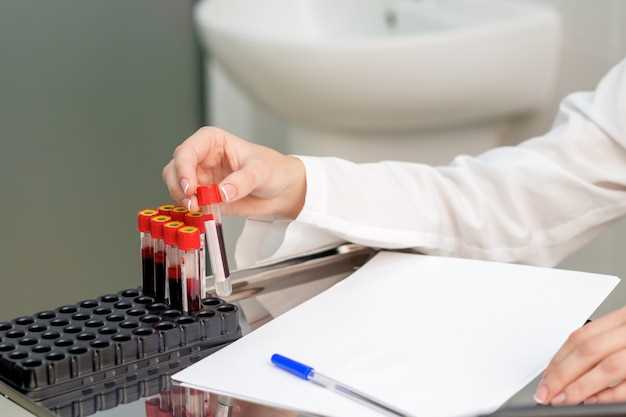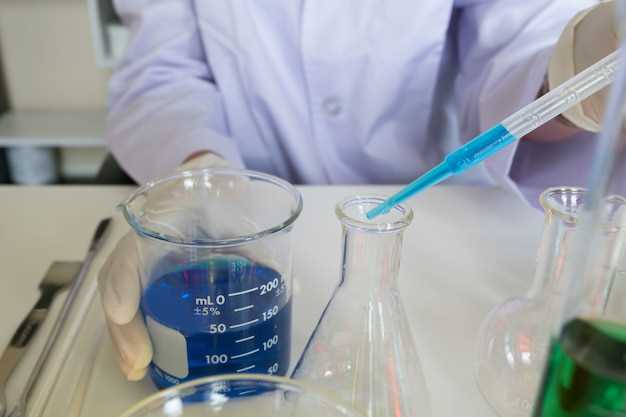
Azithromycin is a widely-used antibiotic that is effective in treating a variety of bacterial infections. However, ensuring the accuracy and reliability of azithromycin levels is crucial for its efficacy. With HPLC analysis, you can confidently determine the concentration of azithromycin in pharmaceutical formulations and biological samples with precision.
Our advanced HPLC solutions provide you with the tools you need to achieve accurate and reproducible results in azithromycin analysis. Whether you are conducting research, quality control, or formulation testing, our HPLC systems offer unparalleled performance and sensitivity.
Experience the benefits of high-performance liquid chromatography and elevate your analytical capabilities for azithromycin determination. Trust in the power of HPLC analysis to deliver reliable results and ensure the effectiveness of azithromycin in your applications.
Methods

When determining azithromycin by HPLC, several methods can be employed to ensure accurate results:
- Sample collection: Obtain samples from the desired source and handle them carefully to prevent contamination.
- Sample preparation: Follow a precise protocol for sample preparation to ensure uniformity and consistency.
- Extraction procedure: Use an appropriate extraction method to isolate azithromycin from the sample matrix effectively.
- Chromatographic conditions: Set up the HPLC system with the correct parameters, such as column type, mobile phase composition, and detection wavelength.
- Calibration curve: Prepare a calibration curve using standard solutions of azithromycin to quantify the concentration in the samples accurately.
Methods
HPLC Instrumentation:
The high-performance liquid chromatography (HPLC) system used for the determination of azithromycin consists of a column oven, autosampler, and UV detector. The column oven maintains a constant temperature to ensure reproducible results, while the autosampler accurately injects the samples into the column. The UV detector monitors the eluent for the presence of azithromycin based on its absorbance at a specific wavelength.
Sample Preparation:
Prior to analysis, samples containing azithromycin need to be properly prepared. This involves extracting azithromycin from the sample matrix using a suitable extraction procedure. The extracted azithromycin is then diluted to an appropriate concentration for HPLC analysis to ensure accurate quantification.
Chromatographic Conditions:
The chromatographic conditions for the analysis of azithromycin involve a specific mobile phase composition. The mobile phase is carefully selected to provide optimal separation of azithromycin from other components in the sample matrix. Additionally, calibration curves are used to quantify the amount of azithromycin present in the sample based on its retention time and peak area.
HPLC Instrumentation
High-Performance Liquid Chromatography (HPLC) instrumentation plays a vital role in the analysis of azithromycin and other compounds. The key components of an HPLC system include a pump, injector, column, detector, and data collection system.
Pump

The pump is responsible for delivering the mobile phase at a constant flow rate to the column. It is essential for achieving reproducible results and accurate separations.
Injector
The injector is used to introduce the sample into the HPLC system. It must ensure precise and reproducible injection volumes to maintain the integrity of the analysis.
Column
The column is where the separation of compounds occurs based on their interactions with the stationary phase. For azithromycin analysis, a specific column type compatible with the compound is chosen.
Detector
The detector is responsible for measuring the eluted compounds from the column. It can be a UV, fluorescence, or mass spectrometry detector, depending on the compound’s nature and the required sensitivity.
Data Collection System
The data collection system collects and processes the detector’s output to generate chromatograms and quantify the analytes. It ensures accurate and reliable results by translating the detector signals into meaningful data.
Sample Preparation
In order to prepare the samples for analysis, an extraction procedure is necessary to isolate the azithromycin from the matrix. The first step involves weighing the sample and transferring it to a suitable vessel. Then, a solvent is added to extract the azithromycin from the sample. The mixture is then sonicated or vortexed to enhance the extraction process.
After extraction, the next step is to filter the solution to remove any particulate matter that may interfere with the HPLC analysis. The filtered solution is then ready for injection into the chromatographic system. It is important to ensure that the sample preparation procedure is carried out carefully and accurately to obtain reliable analytical results.
Extraction procedure
The extraction procedure for azithromycin involves the use of organic solvents to isolate the compound from the sample matrix. The first step is to prepare the sample by adding a known volume of the sample solution to a centrifuge tube. Next, an organic solvent like methanol or acetonitrile is added to the sample to extract the azithromycin. The mixture is then vortexed and centrifuged to separate the organic layer containing the analyte from the sample matrix.
Centrifugation
After the organic solvent has been added and the mixture has been vortexed, the sample is centrifuged at high speed. This step helps to separate the organic layer containing the azithromycin from any remaining solid particles or precipitates in the sample. The centrifugation step is crucial to ensure efficient extraction of the analyte.
| Step | Description |
|---|---|
| 1 | Add organic solvent to the sample |
| 2 | Vortex the mixture |
| 3 | Centrifuge the sample |
Chromatographic Conditions
For the determination of azithromycin by HPLC, specific chromatographic conditions need to be followed. The mobile phase composition plays a crucial role in the separation of the analyte. Typically, a mixture of acetonitrile and water with an acid additive like phosphoric acid or trifluoroacetic acid is used.
The ratio of acetonitrile to water in the mobile phase can vary depending on the stationary phase and the desired separation. A common mobile phase composition is 50:50 acetonitrile-water with 0.1% trifluoroacetic acid.
The flow rate of the mobile phase is another important parameter that affects the chromatographic separation. A typical flow rate for azithromycin analysis is around 1 mL/min, but this can be adjusted based on the column type and dimensions.
The column temperature is also a critical factor in HPLC analysis. Maintaining a constant temperature helps in reproducible results. Typically, the column temperature is set between 25-30°C for azithromycin analysis.
Overall, precise control of the chromatographic conditions is essential for accurate and reliable quantification of azithromycin using HPLC.
Mobile phase composition
The mobile phase used for the HPLC analysis of azithromycin consists of a mixture of acetonitrile and 0.1% formic acid solution. The acetonitrile serves as the organic solvent, while the formic acid provides the necessary acidity for the separation process.
The ratio of acetonitrile to the formic acid solution is crucial for the proper elution of azithromycin and other components in the sample. Typically, a gradient elution is employed to optimize the separation and detection of azithromycin in the sample.
| Time (min) | % Acetonitrile | % Formic Acid Solution |
|---|---|---|
| 0 | 10 | 90 |
| 10 | 50 | 50 |
| 20 | 90 | 10 |
This gradient allows for the efficient separation of azithromycin from other components in the sample, leading to accurate and reliable quantification of the analyte. The mobile phase composition plays a critical role in the success of the HPLC analysis of azithromycin and is carefully optimized to achieve the desired results.
Calibration Curve
The calibration curve was constructed by plotting the peak area versus the concentration of azithromycin standard solutions. A series of standard solutions with known concentrations of azithromycin were prepared and analyzed using the HPLC method described above. The peak areas of the azithromycin peaks were recorded, and a linear regression analysis was performed to determine the relationship between concentration and peak area.
The calibration curve showed a linear relationship between the concentration of azithromycin and the peak area over the range of concentrations tested. The correlation coefficient (R2) value was close to 1, indicating a strong correlation between the concentration of azithromycin and the peak area. The slope and intercept of the calibration curve were used to quantitate the amount of azithromycin in the unknown samples by comparing their peak areas to the calibration curve.
